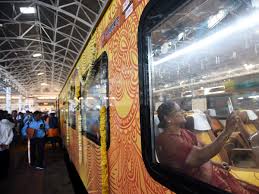
The Railways, which has set a target to become a “net-zero carbon emitter” till 2030
It said orders have been placed for 198 MW capacity solar rooftop panels at 550 more stations which are under execution.
The Railways, which has set a target to become a “net-zero carbon emitter” till 2030, is set to produce solar energy for meeting its energy consumption needs of more than 33 billion units in the next 10 years. Its current annual requirement is about 20 billion units.
"To achieve its objective of becoming 100 per cent self-sustainable for all its power needs and also to contribute to national solar power goals, the Indian Railways has solarised more than 960 stations till date. Orders have been placed for 198 MW solar rooftop capacity for 550 stations which are under execution," a Railways statement said.
"About 51,000-hectare vacant land is available with the Railways and is now ready to extend all support to the developers for installing solar power plants on Railway''s vacant un-encroached land. It may be noted that Railways is also set to achieve 100 per cent electrification by the year 2023," it said.
The Railways has plans for installing solar plants of 20 GW capacity by utilising its vacant land by 2030. Some of the stations solarised are Varanasi, New Delhi, Old Delhi, Jaipur, Secunderabad, Kolkata, Guwahati, Hyderabad and Howrah.
It is committed to utilise solar energy for meeting its traction power requirement and become a complete green mode of transportation.
The Railways has also developed a plan for installing solar plants of 20 GW capacity by utilising its vacant land by 2030.
In this regard, bids for 3 GW solar projects on vacant railway land parcels and those along the railway track have already been invited by Railway Energy Management Company Ltd. (REMCL), a PSU of the Indian Railways.
These solar projects, besides supplying power to Railways at reduced tariff, will also protect its land by the construction of a boundary wall along the track.

0 Response to "The Railways, which has set a target to become a “net-zero carbon emitter” till 2030"
Post a Comment